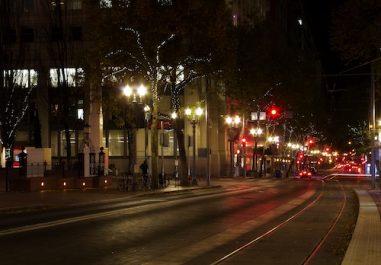L.A. Painting Streets To Keep Things Cool
 Los Angeles is looking for various ways to stay cool, literally, not figuratively speaking.
Los Angeles is looking for various ways to stay cool, literally, not figuratively speaking.
That’s because the second largest city in the country is having a hard time dealing with the rising temperatures.
Lately, L.A. has been experiencing a warmer than usual climate, much of which is caused from global warming.
In fact on Thanksgiving day in 2017, parts of southern California expereinced the hottest day ever recorded, hitting 91 degrees by noon.
And the rising temps are here to stay, bringing with them health concerns for many of California’s residents.
By 2050 much of L.A. will be on average 5 degrees hotter, be recording extreme heat days at or above 95 degrees, and see more smog in the air, causing more health issues such as asthma and heart disease, according to Curbed Los Angeles.
Because of these factors, Mayor Eric Garcetti decided to try out a new method in the attempt to help keep temperatures down as much as possible by “cool paving” some streets.
Using a product called CoolSeal, certain streets will receive an application of the light gray paint on the asphalt. The paint has shown to reduce temperatures by 10 degrees, according to The New York Times.
The reduction in the heat radiated off asphalt reaching over 100 degrees is said to help with the overall temperatures recorded, hopefully improving the “heat island” effect currently expereinced in L.A.
The “heat island” effect means the city is hotter than the surrounding countryside. Not only will the reflective paint help cool down the temperatures, it will also help lessen air pollution and keep neighboring businesses cooler as well, according to the Daily News.
In May 2017, Canoga Park received the first go at paving 30 miles of street with the cooling gray reflective paint. Fourteen other districts were expected to receive the cooling treatment by June 2017.
But the cost to keep things cool is not cheap. One mile of the cooling paint comes with a $40,000 price tag. But the Mayor, California residents, and California’s chief sustainability officer feel this new method will benefit the city for years to come.
















